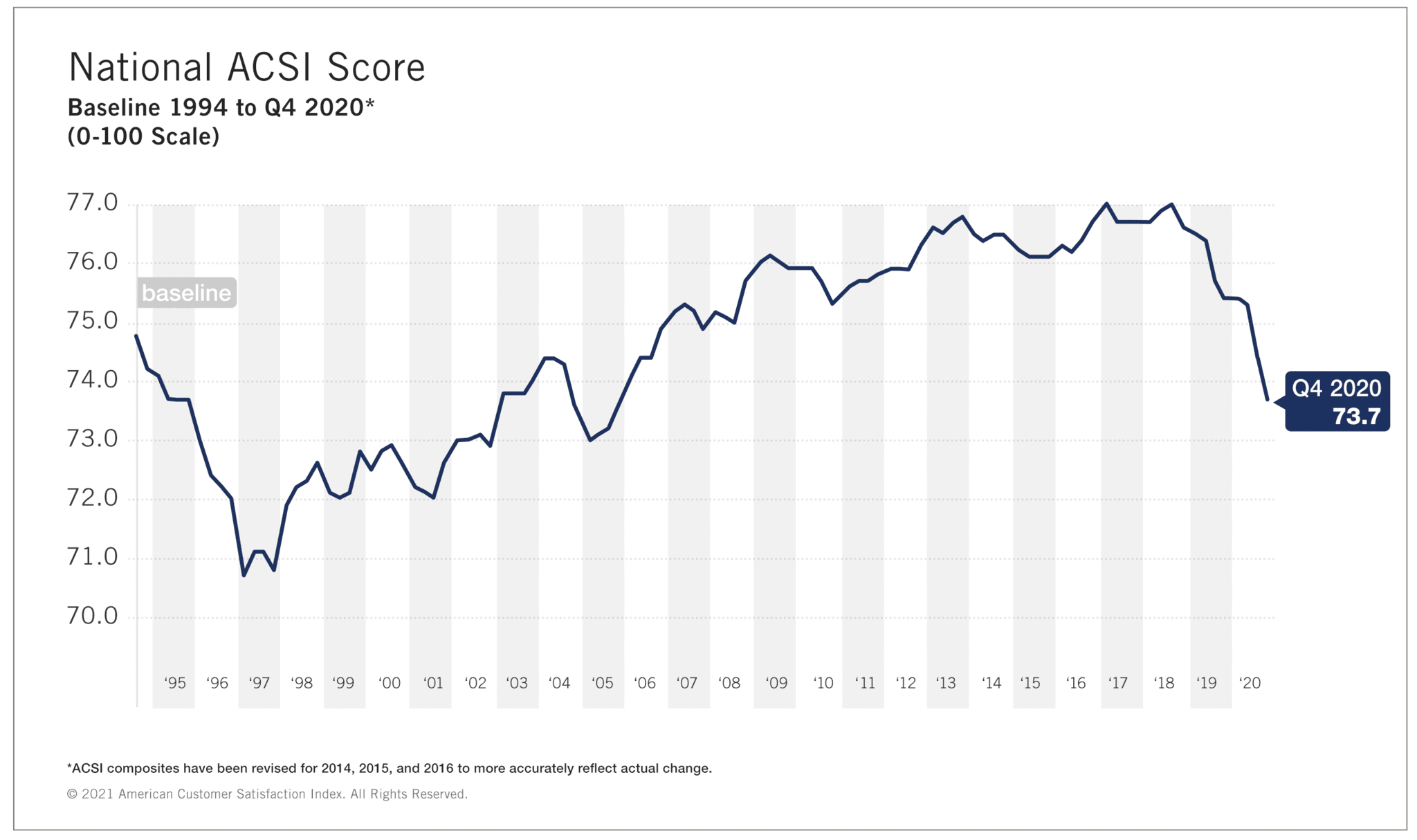ANN ARBOR, Mich. (February 17, 2021) — The deterioration in U.S. customer satisfaction continued in 2020, with a 0.9% drop in the fourth quarter to a score of 73.7 (out of 100), according to the national American Customer Satisfaction Index (ACSI®).
While the COVID-19 pandemic may have exacerbated things, the decline in ACSI began more than a year before the pandemic hit. In fact, national customer satisfaction has declined in eight of the past nine quarters. It’s now at its lowest level since 2005.
“Some 20 years ago, when more companies came to realize that investments in customer satisfaction seemed to have good financial payoffs, scores began to rise,” said Claes Fornell, ACSI Founder and Chairman. “From the late 1990s to 2014, there was a clear upward trend in customer satisfaction. The progress came to an end in late 2013, followed by a period of mostly flat ACSI scores. That period lasted until late 2018. Since then, there has been a steep decline in customer satisfaction.”
Since ACSI is predictive of both consumer spending and GDP, both have been fragile for some time now. However, the weakness in consumer spending is not due to lack of disposable income or lack of savings. Both have gone up. Nevertheless, GDP contracted by 3.5% for the year 2020 even though it was up by 4% in the final quarter.
What are the other factors that have contributed to the decline in customer satisfaction?
One such factor may be that U.S. domestic markets have become less competitive. Barriers to entry have increased and capital investments have dropped. Another likely factor is that the tools companies use for analyzing data about customers need improvement. The IT revolution has led to growth of data supply, more data storage, faster transmission, distribution, and crafty data display.
However, to ascertain how to best satisfy and keep customers, information about cause-and-effect is necessary. Many of the analytical tools rely on artificial intelligence to find patterns in consumer data, but patterns say little about cause and effect. Increased use of causal models would probably be an effective remedy.
Since customer retention typically has an increasing rate of return and thereby represents an unusually attractive form of investment (since it also, by definition, reduces risk), the stalling of, and now decline in customer satisfaction in the U.S. is a serious problem. Increasing customer satisfaction shifts demand curves upward, encourages consumer spending, and thereby leads to economic growth. Declining customer satisfaction has the opposite effect.
The national ACSI score (or ACSI composite) reflects customer satisfaction across all sectors and industries over a rolling 12-month period. For more, follow the American Customer Satisfaction Index on LinkedIn and Twitter at @theACSI or visit www.theacsi.org.

This press release is also available in PDF format.